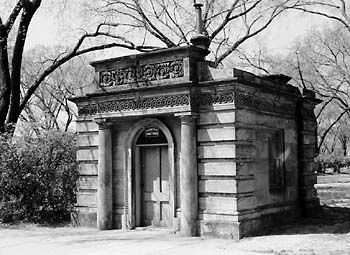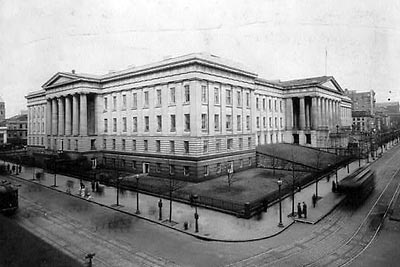The Sandstone Quarries at Aquia Creek

The sandstone quarries at Aquia Creek, just up from Aquia Landing at Brent Point, were the source of the building stone used in the construction of many well-known buildings, such as the Capitol and the White House, as well as buildings at Woodstock, George Brent’s plantation on Aquia Creek, and the Brent tombstones at the Aquia cemetery.
About 1646-47 Giles Brent came from Maryland and settled on Aquia Creek and in 1650 quarrying was begun. The Aquia sandstone, also known as freestone in colonial times, was a reddish color. The sandstone was used at Gunston Hall, home of George Mason IV whose second wife was Sarah Brent (c.1730-1806), daughter of George Brent and Catherine Trimingham. It was used for the stone steps and walkways of Mount Vernon, for the old Aquia Church, and for Christ Church in Alexandria.
A 1694 deed shows that George Brent, nephew of Giles, “hast purchased a small
tongue of neck or Island of Land with small point of marsh…” and after this time it was known as Brent’s Point. Except for one acre of this land, which was sold in 1786, to a stonemason by the name of Robert Steuart, the quarry remained in the possession of the Woodstock Brent family for nearly one hundred years. On 2 December 1791, George Brent (1760-1803), son of Robert Brent and Ann Carroll, sold the quarry to Pierre L’Enfant for £1800 (about $6000).

